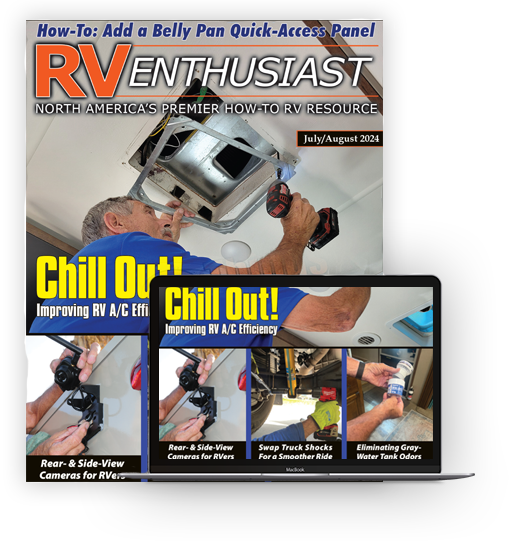Tech Tune-Ups
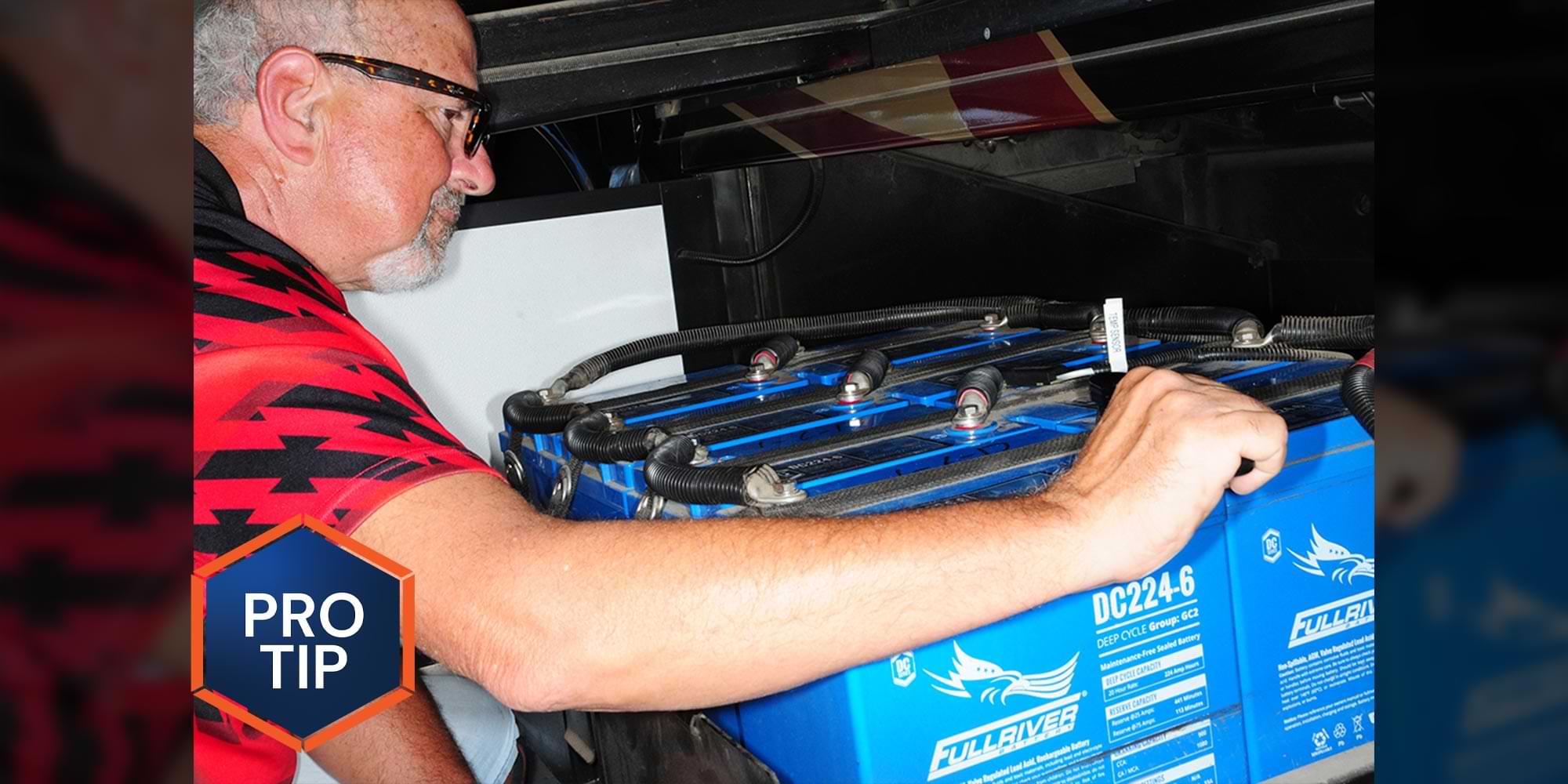
Not every tech tip requires the step-by-step approach — sometimes, all that’s needed is to direct a hands-on DIYer to the right information. We tapped into RV Enthusiast magazine’s wealth of “Technically Speaking” topics by RVE Technical Director Bill Gehr to provide a few “quick fixes” for some common dilemmas encountered by RVers.
Smelling Propane
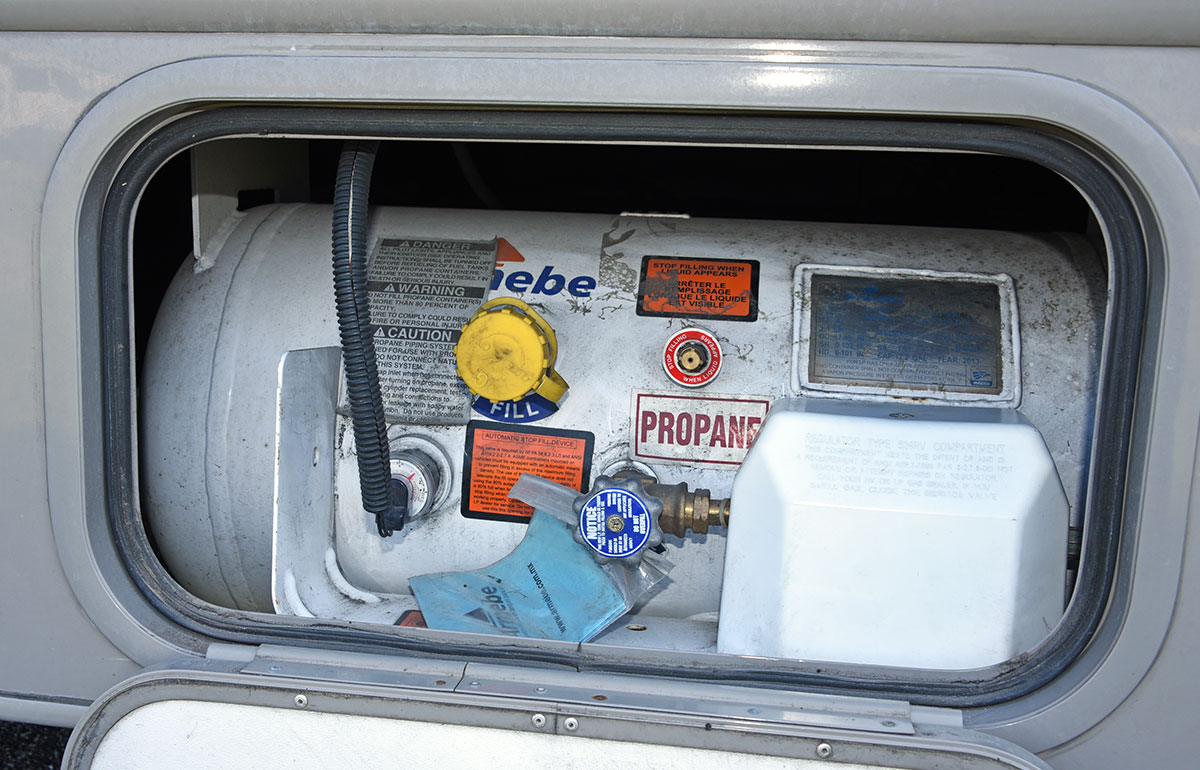
– Gerard Daniels
It’s pretty rare that you see one of the valves leaking around the packing nut, but it does happen from time to time. No, there are no packing nut replacements available that I know of — and more importantly, I would not suggest trying to repair a gas valve because you can make things worse. My suggestion is to replace the valve, which should be done by a competent technician certified to work on LP-gas systems.
While you’re at it, take the time to check the propane regulator — it should be replaced every five years, whether it looks good or not, for safety’s sake. Pay close attention to the vent on the regulator; the newer two-stage regulators have side and bottom vents, so be sure that you get the correct one. While you’re changing the regulator, carefully inspect the neoprene hose that runs from it to the fixed gas pipe attached to the motorhome. Be sure to check all fittings that have been changed with your leak detector solution before calling it “good.” And to be even safer, have a technician perform a LP-gas leak-down test, which should be done every year or anytime the system has been opened.
Device Charging Outside
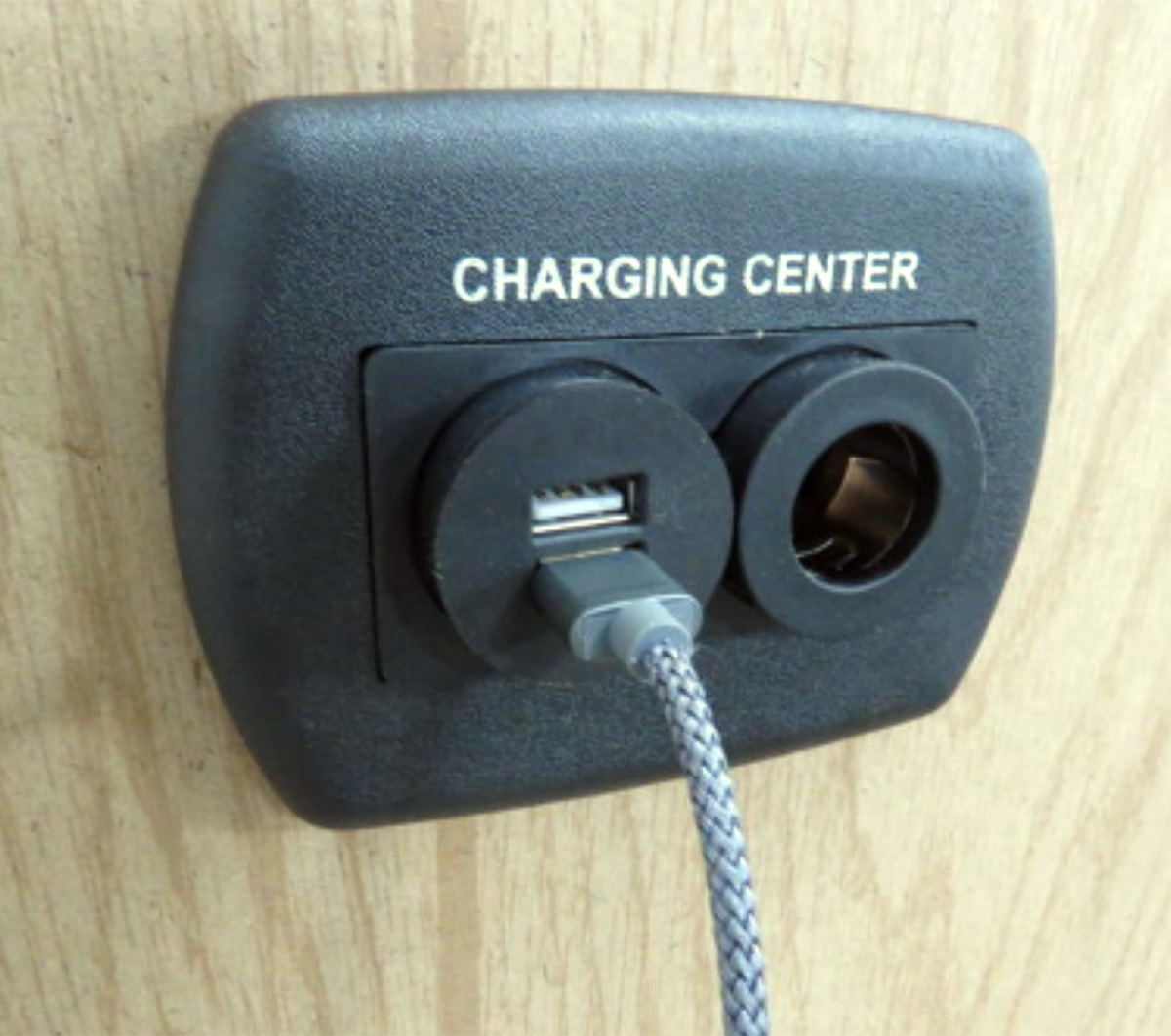
Etrailer.com carries a number of multi-device charging stations, with most offering a combination of USB ports and a 12-volt DC socket connection.
– John Tatum
My suggestion is to get a 12-volt DC USB port adapter that is made to mount permanently in a wall. Do a search for “Charging Station for RVs” at etrailer.com. It has two USB ports and one 12-volt DC outlet, sells for about $34 and is available in several colors to blend in with the color of your RV. This will give you the ability to charge more than just cell phones. You should be able to locate a source of 12-volt DC power in or near the compartment, even if you have to tap into an overhead light fixture. There are also waterproof USB outlets available if you decide to locate a charging station on the outside sidewall.
Running on Portable Generator Power?
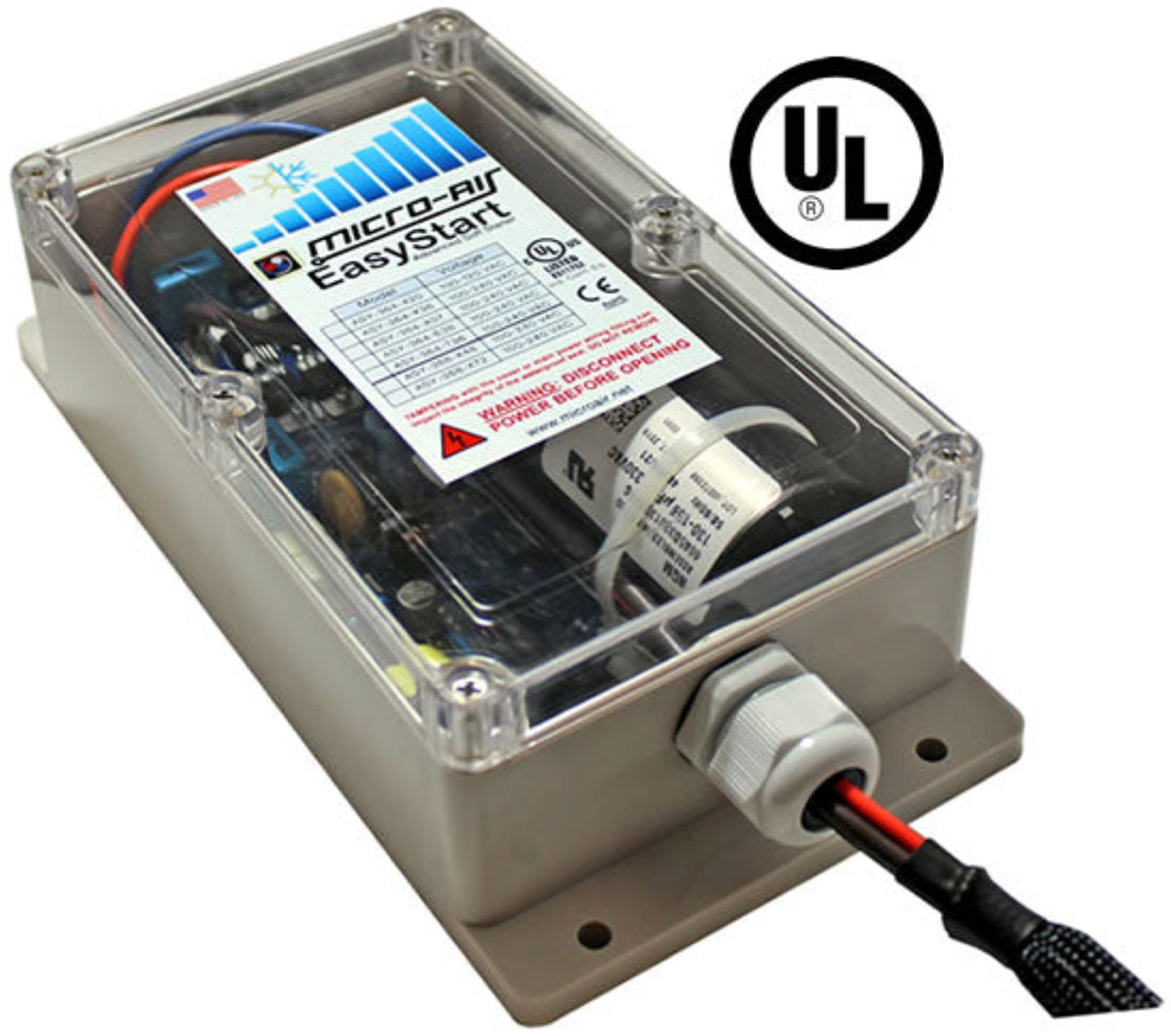
Micro-air’s EasyStart is designed to reduce the initial power requirements of an RV air-conditioner.
– Ern Johnson
Here is a suggestion that will likely alleviate your issue: I recommend a product called Micro-Air. This is a module that can be added to your air-conditioner allowing it to start and run on much less current — even from your portable Honda generator. At the very least you should be able to alleviate problems when hooked up to lower power.
The problem arises from the amount of current need to start an air-conditioner as the compressor and the fan try to kick on at the same time — drawing a huge amount of amperage for a very short period of time. The surge literally lasts for only 1/6 of a second, but is enough to cause a generator to stall out. The Micro-Air EasyStart (microair.net) reduces the necessary amperage to start the compressor, making it possible to run on portable power, which really comes in handy when boondocking in an RV without an onboard generator. I have talked to several RVers who are quite pleased with this product. Figure on spending around $300 for the device.
Another company with a similar product is Network RV, which offers its SoftStartRV (softstartrv.com). The SoftStartRV electronically ramps up the compressor over a longer period of time (about 1/3 of a second), substantially reducing the current required. RV Enthusiast contributor Mike Sokol tested the SoftStart RV on a Dometic Penguin 15,000-Btu air-conditioner (youtube.com/watch?v=iJqijovoMW0&t=3s) and, with his recording equipment, was able to visually demonstrate how the technology works. In his example, the air-conditioner spiked at 58 amps stock — and just 24 amps after the SoftStartRV was installed. That’s 6,960 watts without, and 2,880 watts with the SoftStartRV.
Whichever option you elect to go with, I suggest you have it installed by a qualified technician as the electrical connections can be complicated for those who are not experienced with wiring and electricity. A visit to either company’s website or Amazon will provide all of the information that you need to order this product. Enjoy your vacation this summer — air-conditioning is definitely a must-have during the hot summer months.
The Ripple Effect
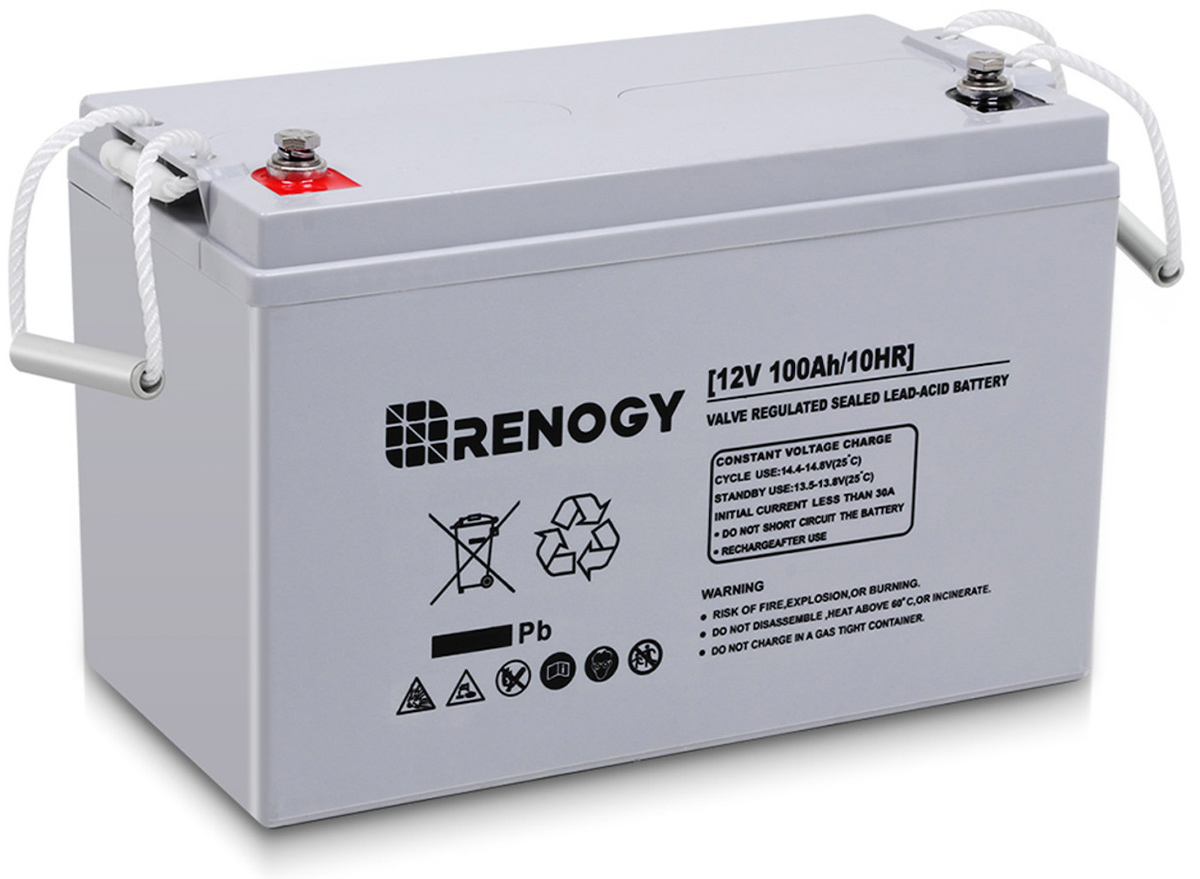
– Dexter Johnson
One of the reasons to keep a battery in the system is to prevent AC ripple, which is a variation of DC voltage coming from the converter that has been derived from AC power. This ripple effect can damage your control boards. Another reason for the battery(ies) is that it acts like a giant capacitor to smooth out voltage spikes. If you’re concerned about access in order to add water to an open cell battery(ies), consider going to an AGM battery so you won’t have to keep track of the electrolyte level (while I love the performance of lithium batteries, their expense is unnecessary in your situation). You will, though, need to check for corrosion on the terminals periodically. Theoretically, you could even use a starting battery since you’re not going off the grid.
Diminished Flame
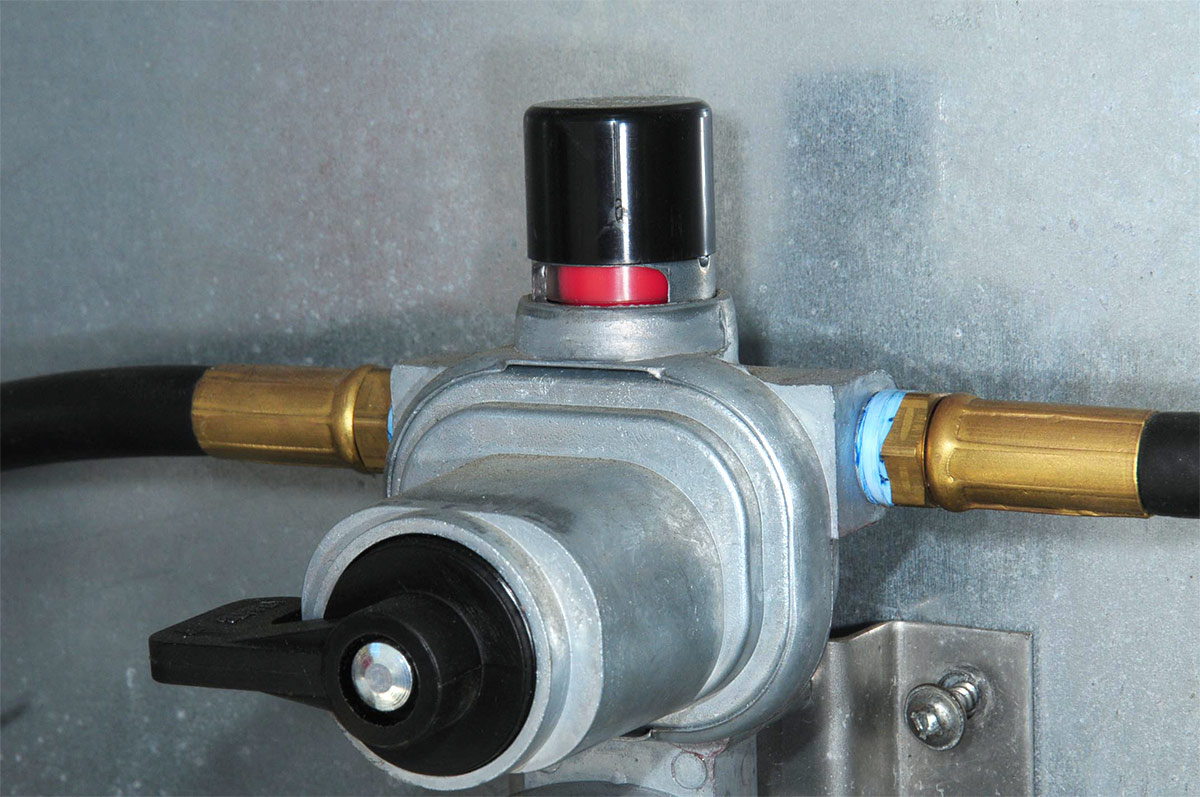
– Jack Sisar
You did not mention whether the propane cylinders were mounted on one side or if there is one on each side of the fifth wheel in separate compartments. This could make a difference in the diagnosis, so I will cover a process for both instances.
If both cylinders are on the same side, chances are your LP-gas regulator is defective and is unable to handle the added pressure when the large burner fires up. By the way, a good way of finding out whether your regulator is bad is to turn on all three stove burners and then turn on the furnace and see if the flames on all three burners diminish dramatically. If that happens, a replacement is required, which should be done every five years regardless of performance.
The regulator is very easy to change; a new matching regulator can be located and purchased from one of the Internet sellers or from your local RV dealer. Once you install the new regulator, swing by your local RV repair shop and have the technicians perform a leak/drop-down test using a manometer (this should be done every year, anyway). If your trailer is used at very high altitudes, this could explain part of the problem since the pressure changes drastically when you get up around 8,000 to 10,000 feet in elevation.
If you have propane cylinders on either side of the trailer, one side should have a single-stage regulator, which controls gas pressure in the line routed to the automatic changeover regulator on the other side of the trailer. Since this regulator can also be defective, plan on replacing it at the same time. Again, this should be done every five years.
Already a Subscriber? Click here for Access to the Full Issues.

